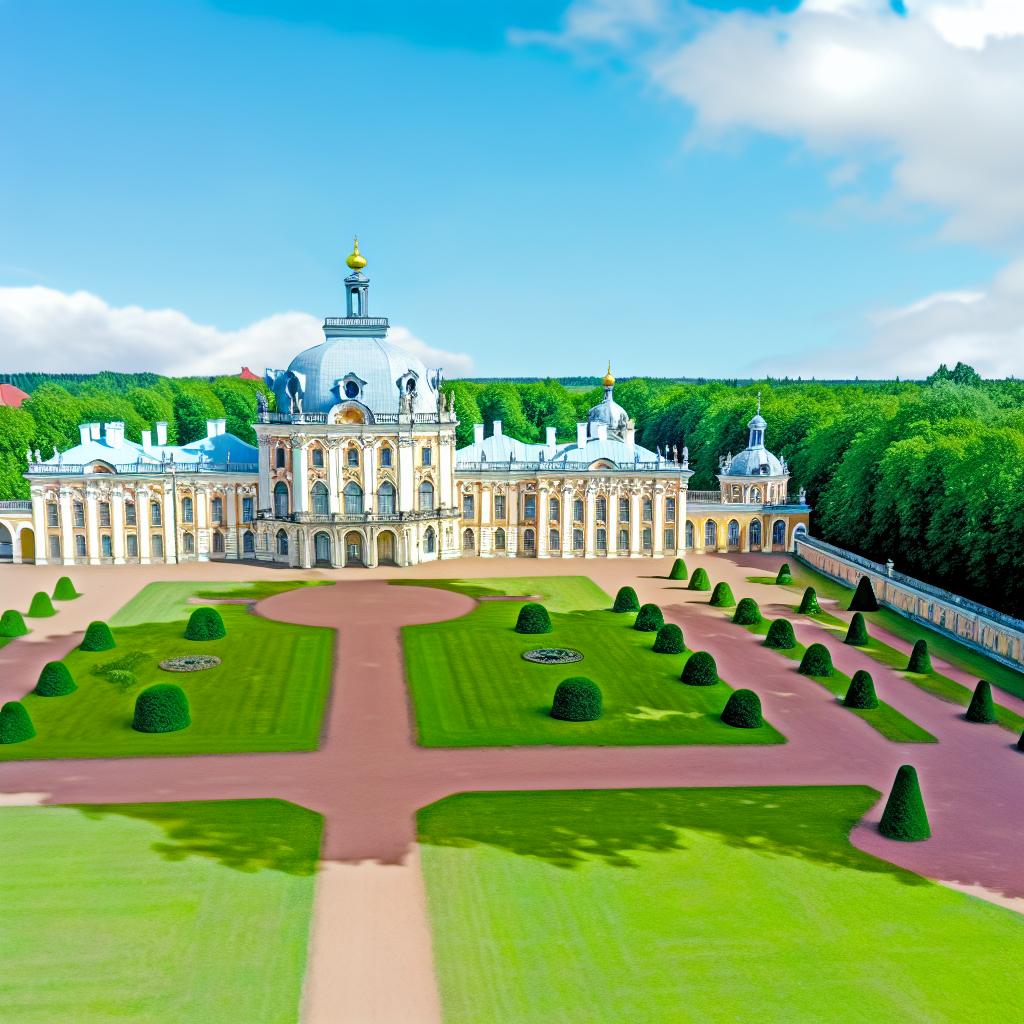Overview of Oranienbaum Palace
Oranienbaum Palace, nestled in the historic town of Lomonosov, near the bustling city of Saint Petersburg in Russia, stands as a testament to the opulence and grandeur of Russia’s imperial past. This architectural gem is part of the UNESCO World Heritage Site recognized as the “Historic Centre of Saint Petersburg and Related Groups of Monuments.” The palace complex is not just a series of grand buildings; it is a harmonious blend of majestic structures set amidst meticulously landscaped parks and gardens, embodying the historical narrative and architectural evolution of its era.
History of Oranienbaum Palace
Oranienbaum Palace’s history is rooted in the early 18th century when it was conceived by Prince Alexander Menshikov, a prominent figure in Russian history, known for his close association with Peter the Great. “Oranienbaum,” which translates to “orange tree” in German, aptly reflects the era’s fascination with exotic plants and the importation of rare fruits and trees from distant lands. This fascination is mirrored in the estate’s initial design and landscaping. After the fall from grace of Prince Menshikov, the estate transitioned into the hands of the Russian imperial family, heralding a new chapter in its rich history.
Development Under Empress Elizabeth and Catherine the Great
The reigns of Empress Elizabeth and Catherine the Great marked significant periods of development and transformation for Oranienbaum Palace. Under Empress Elizabeth, the palace saw considerable enhancements. Renowned architect Bartolomeo Rastrelli, famous for his Baroque style, was instrumental in adding elements that augmented the opulent and dramatic flair typically associated with Russian palatial architecture during that period. The following era under Catherine the Great represented a shift towards neoclassical aesthetics. It was during Catherine’s reign that the magnificent Chinese Palace was commissioned. Noted architect Antonio Rinaldi designed this building, embracing the Chinoiserie style—a testament to the era’s intrigue with Eastern arts and culture.
Architectural Features
The architectural tapestry of Oranienbaum Palace is a fascinating study of evolving tastes and design philosophies among Russian royalty over centuries. Each structure within the complex exhibits unique styles and features, contributing to the palace’s storied charm and elegance.
The Grand Palace
Among the notable structures within the Oranienbaum ensemble, the Grand Palace is particularly significant. As the oldest component of the complex, it embodies the Baroque detailing synonymous with its era. Its expansive interiors are a reflection of the extravagant life of Russian nobility, with rooms adorned with intricate woodwork and lavish embellishments. These elements underscore the meticulous attention to detail and the grandiose aesthetic that Baroque architecture is known for.
The Chinese Palace
The Chinese Palace stands out not just within the Oranienbaum complex, but also in the wider architectural landscape of the time. It serves as an eloquent representation of the luxurious interior design trends of the 18th century. The palace’s Great Hall is particularly noteworthy, where crystal chandeliers cast their glow on elegantly painted ceilings, capturing the aesthetic aspirations of its time. The influence of Chinese art styles can be seen in the unique decorative elements throughout the palace, showcasing a fascinating blend of Russian and Eastern architectural traditions.
The Landscaped Gardens
Beyond its architectural splendor, Oranienbaum is equally celebrated for its stunning landscaped gardens. These gardens are a verdant tapestry woven from design philosophies across different periods. They skillfully combine formal French designs, renowned for their geometric precision and symmetry, with more naturalistic English-style gardens that embrace organic layouts, reflecting the evolving preferences in garden design over time. These grounds are a visual narrative in themselves, illustrating changing tastes in landscaping from rigid formality to a more romanticized perception of cultivated nature.
Preservation Efforts
Today, the Oranienbaum Palace and its sprawling grounds serve as more than just architectural relics; they are preserved with care as museum-reserve sites under the stewardship of the Saint Petersburg State Museum of History. This preservation effort ensures the safeguarding of the palace’s cultural and architectural legacy, allowing the public to engage with an integral element of Russia’s imperial past. Through these efforts, visitors are afforded a window into the intricate tapestry of Russian history, architecture, and the cultural exchange that has shaped the nation’s artistic lineage.
For those interested in delving deeper into the history and architecture of Oranienbaum Palace, and to learn about current exhibitions and visiting hours, the [official website](https://www.oranienbaum.org) provides a wealth of resources and information.

